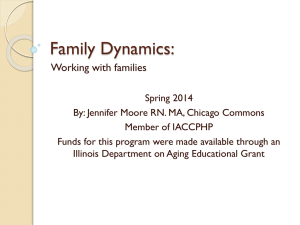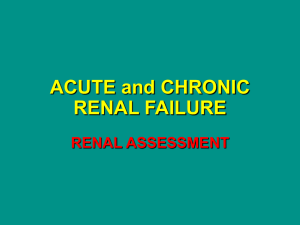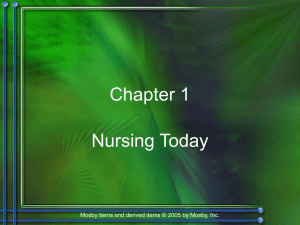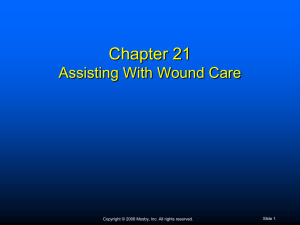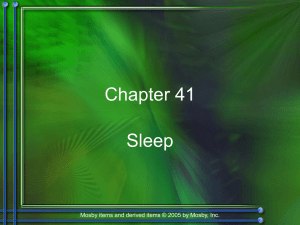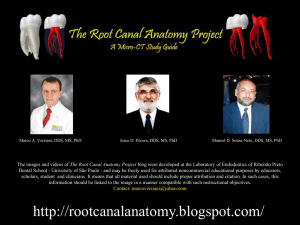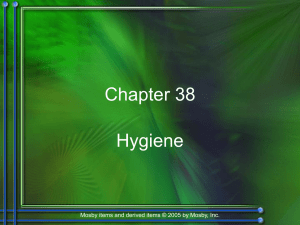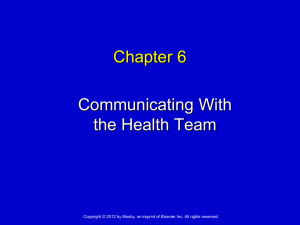Cellular Biology
advertisement
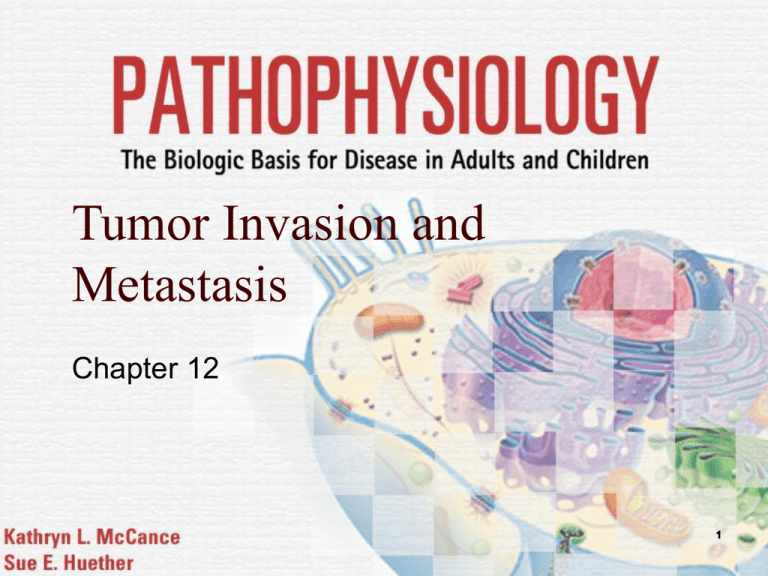
Tumor Invasion and Metastasis Chapter 12 1 Tumor Spread Direct invasion of contiguous organs Metastases to distant organs Known as local spread Lymphatics and blood Metastases by way of implantation 2 Mosby items and derived items © 2006 by Mosby, Inc. Phases of Tumor Spread Transformation Growth Local invasion Distant metastasis 3 Mosby items and derived items © 2006 by Mosby, Inc. Local Spread Invasion Cellular multiplication Mitotic rate vs. cellular death rate Mechanical pressure Release of lytic enzymes Decreased cell-to-cell adhesion Increased motility Intravasation Extravasation 4 Mosby items and derived items © 2006 by Mosby, Inc. Local Spread 5 Mosby items and derived items © 2006 by Mosby, Inc. Three-Step Theory of Invasion Tumor cell attachment Degradation or dissolution of the matrix Fibronectin and laminin Enzymes Locomotion into the matrix Invadopodia (pseudopodia) 6 Mosby items and derived items © 2006 by Mosby, Inc. Metastasis Spread of cancer from a primary site of origin to a distant site Steps Direct or continuous extension Penetration into lymphatics, blood vessels, or body cavities Transport into lymph or blood Transport to secondary sites Entry and growth in secondary sites 7 Mosby items and derived items © 2006 by Mosby, Inc. Angiogenesis Growth of cancerous colonies depends on an adequate blood supply Angiogenesis is the development of new blood vessels p53 gene Proangiogenic factors Angiogenesis inhibitors 8 Mosby items and derived items © 2006 by Mosby, Inc. Angiogenesis 9 Mosby items and derived items © 2006 by Mosby, Inc. Distant Metastases Metastasis often occurs in the first capillary bed encountered by circulating cells Organ tropism Preferential growth of cancerous cells in certain organs Growth factors, chemokines, hormones, tissueselective homing receptors, and chemotactic factors 10 Mosby items and derived items © 2006 by Mosby, Inc. Staging Involves the size of the tumor, degree to which it has invaded, and the extent to which it has spread Stage 1 Stage 2 Locally invasive Stage 3 Cancer is confined to its organ of origin Regional structures Stage 4 Distant sites 11 Mosby items and derived items © 2006 by Mosby, Inc. Staging World Health Organization TNM system 12 Mosby items and derived items © 2006 by Mosby, Inc. Clinical Manifestations of Cancer Pain Little or no pain is associated with early stages of malignancy Influenced by fear, anxiety, sleep loss, fatigue, and overall physical deterioration Mechanisms Pressure, obstruction, invasion of sensitive structures, stretching of visceral surfaces, tissue destruction, and inflammation 13 Mosby items and derived items © 2006 by Mosby, Inc. Clinical Manifestations of Cancer Fatigue Subjective clinical manifestation Tiredness, weakness, lack of energy, exhaustion, lethargy, inability to concentrate, depression, sleepiness, boredom, and lack of motivation Suggested causes Sleep disturbance, biochemical changes from circulating cytokines, secondary to disease and treatment, psychosocial factors, level of activity, nutritional status, and environmental factors 14 Mosby items and derived items © 2006 by Mosby, Inc. Clinical Manifestations of Cancer Syndrome of cachexia Most severe form of malnutrition Present in 80% of cancer patients at death Includes: Anorexia, early satiety, weight loss, anemia, asthenia, taste alterations, and altered protein, lipid, and carbohydrate metabolism 15 Mosby items and derived items © 2006 by Mosby, Inc. Cachexia 16 Mosby items and derived items © 2006 by Mosby, Inc. Clinical Manifestations of Cancer Anemia A decrease of hemoglobin in the blood Mechanisms Chronic bleeding resulting in iron deficiency, severe malnutrition, medical therapies, or malignancy in blood-forming organs 17 Mosby items and derived items © 2006 by Mosby, Inc. Clinical Manifestations of Cancer Leukopenia and thrombocytopenia Direct tumor invasion to the bone marrow causes both leukopenia and thrombocytopenia Chemotherapy drugs are toxic to the bone marrow Infection Risk increases when the absolute neutrophil and lymphocyte counts fall 18 Mosby items and derived items © 2006 by Mosby, Inc. Clinical Manifestations of Cancer Paraneoplastic syndromes Symptom complexes that cannot be explained by the local or distant spread of the tumor or by the effects of hormones released by the tissue from which the tumor arose 19 Mosby items and derived items © 2006 by Mosby, Inc. Cancer Treatment Chemotherapy Use of nonselective cytotoxic drugs that target vital cellular machinery or metabolic pathways critical to both malignant and normal cell growth and replication Goal Eliminate enough tumor cells so the body’s defense can eradicate any remaining cells 20 Mosby items and derived items © 2006 by Mosby, Inc. Cancer Treatment Chemotherapy Compartments 1: cells undergoing mitosis and cytokinesis 2: cells capable of entering the cell cycle in the G1 phase 3: cells not dividing or that have irreversibly left the cell cycle Cells in compartment 3 will die a natural death 21 Mosby items and derived items © 2006 by Mosby, Inc. Chemotherapy Single-agent chemotherapy Combination chemotherapy Principle of dose intensity Therapeutic index Neoadjuvant chemotherapy 22 Mosby items and derived items © 2006 by Mosby, Inc. Chemotherapy 23 Mosby items and derived items © 2006 by Mosby, Inc. Cancer Treatment Ionizing radiation Goals Eradicate cancer without excessive toxicity Avoid damage to normal structures Ionizing radiation damages the cancer cell’s DNA 24 Mosby items and derived items © 2006 by Mosby, Inc. Cancer Treatment Surgery Biopsy and lymph node sampling Sentinel nodes Debulking surgery Palliative surgery Hormone therapy Receptor activation or blockage Interferes with cellular growth and signaling 25 Mosby items and derived items © 2006 by Mosby, Inc. Cancer Treatment Immunotherapy Theoretically, antitumor responses can selectively eliminate cancer cells while sparing normal cells Immune memory is long lived Numerous immunologic mechanisms are capable of rejecting different types of cancer Biologic response modifiers (BRMs) 26 Mosby items and derived items © 2006 by Mosby, Inc. Immunotherapy 27 Mosby items and derived items © 2006 by Mosby, Inc. Cancer Treatment Other forms of immunotherapy Interferon administration Antigens Effector cell lymphokines Monoclonal antibodies 28 Mosby items and derived items © 2006 by Mosby, Inc. Cancer Treatment 29 Mosby items and derived items © 2006 by Mosby, Inc. Side Effects of Cancer Treatment Gastrointestinal tract Bone marrow Hair and skin Reproductive tract 30 Mosby items and derived items © 2006 by Mosby, Inc.
